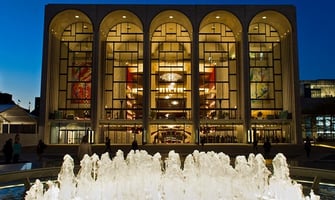A Fairytale for the Soul It begins, as many tales do, with a young man lost in the woods—fleeing a...
The Marriage of Figaro by Mozart — The Comedy That Changed Everything
 The Curtain Rises on Chaos
The Curtain Rises on Chaos
Before a single note is sung, Le Nozze di Figaro opens with a man measuring the floor. Figaro, the quick-witted valet of Count Almaviva, is calculating the dimensions of his new marital quarters—though, in truth, he’s about to measure the limits of power, class, and desire. Mozart’s 1786 masterpiece, written in collaboration with librettist Lorenzo Da Ponte, transforms domestic squabbles into social revolution. Beneath its comic sheen lies a seismic shift: the servants are outsmarting the masters, and the old order is cracking beneath the laughter.
Setting the Stage for Revolution
When Mozart and Da Ponte adapted Pierre Beaumarchais’s banned French play La folle journée, ou Le Mariage de Figaro, they were treading on dangerous ground. The play’s indictment of aristocratic privilege had scandalized Europe. But in Mozart’s hands, what might have been mere satire became something richer—human, musical, and transcendent. Premiering in Vienna just three years before the French Revolution, Figaro embodied the Enlightenment’s insistence that wit and intelligence, not birthright, define one’s worth.
Musically, the opera marked a bold evolution for Mozart. The overture bursts forth with racing strings, announcing a world alive with possibility and mischief. Throughout the score, he gives equal voice to every class of character, weaving a social tapestry in which the Countess’s aching “Dove sono” coexists seamlessly with Figaro’s earthy charm. It’s democracy, rendered in melody.
A Day of Disguises and Discoveries
The entire opera unfolds over one “mad day,” in which Figaro and his fiancée Susanna attempt to outwit their employer, the Count, who has rekindled his interest in the now-abandoned “droit du seigneur”—the supposed right to sleep with a servant’s bride on her wedding night. With Susanna’s cleverness and the Countess’s help, the household becomes a hall of mirrors: disguises, secret notes, and locked doors abound.
There’s Cherubino, the lovestruck page boy caught hiding in wardrobes; the Countess, wounded by her husband’s betrayal yet radiant with dignity; and the Count, whose pomposity collapses beautifully in the opera’s final moments of forgiveness. When the Count kneels before his wife and asks for mercy, the orchestra pauses as if holding its breath—then blooms into harmony. It’s a moment of such grace that even the servants’ laughter quiets.
A Modern Mirror
What makes Le Nozze di Figaro endure is its startling modernity. Beneath its powdered wigs and chamber doors, it’s an opera about power—how it’s used, misused, and reclaimed. In an age still grappling with workplace hierarchies, gender equality, and abuses of authority, Figaro’s defiance feels evergreen. “Se vuol ballare, signor contino,” he sings, promising to make the Count dance to his tune. It’s a servant’s declaration of agency—a sentiment that resonates from the boardroom to the ballot box.
Even the Countess’s anguish feels heartbreakingly contemporary. “Dove sono,” sung with quiet introspection, could belong to any person who has watched love fade beneath the strain of ego. Mozart refuses to draw moral boundaries between high and low, noble and common; instead, he shows us humanity in full measure, flawed and luminous.
A Celebration on Screen
Audiences may recall Le Nozze di Figaro from its past Met: Live in HD broadcast—a riot of energy under the baton of Yannick Nézet-Séguin, with Peter Mattei’s charismatic Count and Susanna’s effervescent sparkle lighting up cinemas worldwide. The production’s elegant eighteenth-century setting only underscored the opera’s timelessness; each door-slam and revelation felt as fresh as a sitcom written yesterday, only sung with infinitely more grace.
A Finale of Forgiveness
By day’s end, Figaro and Susanna are wed, the Count is humbled, and harmony—literal and social—is restored. But Mozart’s genius lies in the ambiguity of that harmony. The final ensemble doesn’t close the curtain on a fairy-tale ending; it opens the door to human possibility. Forgiveness, Mozart suggests, is the truest revolution of all.
Opera Insight
During rehearsals for the 1786 premiere, Emperor Joseph II reportedly asked, “Too many notes, dear Mozart?” to which the composer—ever the Figaro himself—replied, “Just as many as are needed, Your Majesty.” Two and a half centuries later, no one has yet disagreed.
Friends of the Opera is dedicated to making opera accessible, educational, and inspiring for everyone in our community. If you enjoy reading the Friends of the Opera blog, including Arias and Insights, please consider signing up for a membership or providing a donation of support: Learn More



